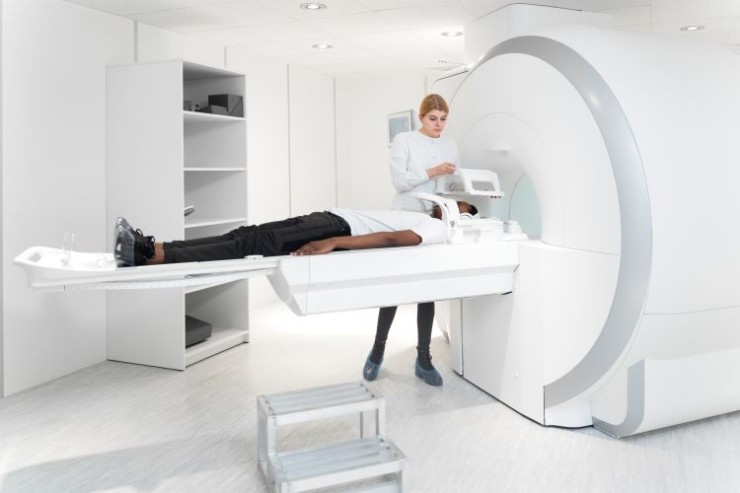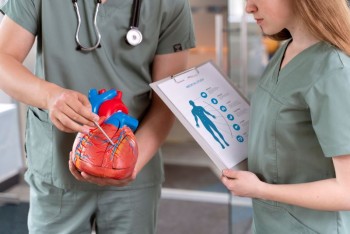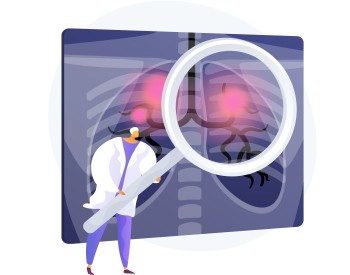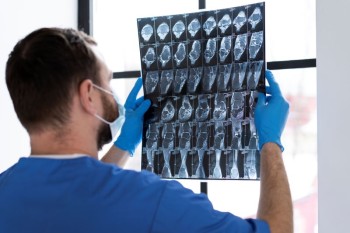
CT Scan Enterography is a specialized diagnostic imaging procedure that focuses on the small intestine.
CT Enterography Scan in India with Cost
CT Scan Enterography in
Detail
Introduction
CT Scan Enterography is a specialized diagnostic imaging procedure that focuses on the small intestine. This article explores the details of CT Scan Enterography, its purpose, and how it contributes to the diagnosis and management of gastrointestinal conditions.
Purpose and Significance of CT Scan Enterography
CT Scan Enterography is primarily performed to evaluate the small intestine and surrounding structures. It is instrumental in diagnosing conditions such as Crohn's disease, inflammation, obstructions, and tumors. The detailed images obtained during the procedure provide valuable insights into the health of the gastrointestinal tract.
Preparation for CT Scan
Enterography
Preparation for CT Scan Enterography involves fasting for a specified period before the procedure. Clear instructions are provided to ensure a clean and clear visualization of the small intestine. Patients may also need to drink a contrast solution to enhance the images during the scan.
Procedure of CT Scan Enterography
During the procedure, patients lie on a table that moves through the CT scanner. Contrast material is either ingested or administered through an IV to highlight the small intestine. The CT scanner captures detailed images, allowing healthcare professionals to assess the structure and function of the small intestine.
Benefits and Risks
CT Scan Enterography provides high-resolution images, aiding in the accurate diagnosis of various gastrointestinal conditions. The benefits of detailed imaging often outweigh the risks. However, exposure to ionizing radiation and the use of contrast material pose potential risks that healthcare providers carefully consider before recommending the procedure.
Interpreting CT Scan Enterography Results
Expertise is crucial in interpreting the results of CT Scan Enterography. Radiologists analyze the images to identify abnormalities, such as inflammation, strictures, or tumors in the small intestine. The information obtained guides further diagnostic and treatment decisions.
Conditions Diagnosed
Through CT Scan Enterography
CT Scan Enterography is effective in diagnosing a range of gastrointestinal conditions, including Crohn's disease, small bowel obstructions, tumors, and inflammatory bowel diseases. The detailed images offer a comprehensive view of the small intestine, enabling precise identification of issues.
Alternatives to CT Scan Enterography
While CT Scan Enterography is a powerful diagnostic tool, alternative imaging methods like MRI or endoscopy may be considered based on the specific clinical scenario. Each method has its strengths and limitations, and the choice depends on the information needed for an accurate diagnosis.
Conclusion
In conclusion, CT Scan Enterography is a valuable tool for evaluating the small intestine and diagnosing a variety of gastrointestinal conditions. The detailed imaging it provides allows healthcare professionals to make informed decisions, ensuring the best possible care for individuals with digestive health concerns.
Frequently Asked Questions About CT Scan Enterography
1. What is CT Scan Enterography?
CT Scan Enterography is a diagnostic imaging procedure that focuses on the small intestine, providing detailed images to assess its structure and detect abnormalities.
2. Why is it performed?
CT Scan Enterography is performed to diagnose conditions such as Crohn's disease, inflammation, obstructions, and tumors in the small intestine.
3. How should one prepare for the procedure?
Preparation involves fasting, and patients may need to drink a contrast solution to ensure clear visualization of the small intestine.
4. Are there any risks associated with CT Scan Enterography?
While generally safe, exposure to ionizing radiation and the use of contrast material pose potential risks. Healthcare providers assess these risks against the benefits before recommending the procedure.
5. How long does the procedure take?
The duration of CT Scan Enterography typically ranges from 30 to 60 minutes, depending on various factors, including the complexity of the examination.
6. Can anyone undergo a CT Scan Enterography?
While generally safe for most individuals, specific health conditions or allergies may contraindicate the use of contrast material. It's essential to inform healthcare providers about any existing conditions or medications before the procedure.
7. Is CT Scan Enterography painful?
The procedure itself is not painful. However, some individuals may experience mild discomfort from fasting or drinking the contrast solution. Healthcare providers aim to minimize any potential discomfort for the patient.
8. Are there age restrictions for CT Scan Enterography?
CT Scan Enterography is generally suitable for individuals of all ages. However, pediatric or elderly patients may require special considerations, and healthcare providers will assess the necessity based on individual health conditions.
9. How soon can one resume normal activities after CT Scan Enterography?
Most individuals can resume normal activities immediately after the procedure. However, if sedation is used, it's advisable to have someone accompany the patient and assist in returning home.
10. Can CT Scan Enterography detect all gastrointestinal conditions?
While CT Scan Enterography is highly effective, it may not detect certain conditions like small polyps or early-stage cancers. In such cases, additional diagnostic methods may be recommended based on the clinical scenario.
Feel free to consult your healthcare provider for personalized information and guidance related to your specific health conditions.
(0)
Login to continue



